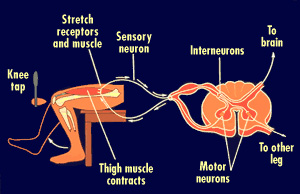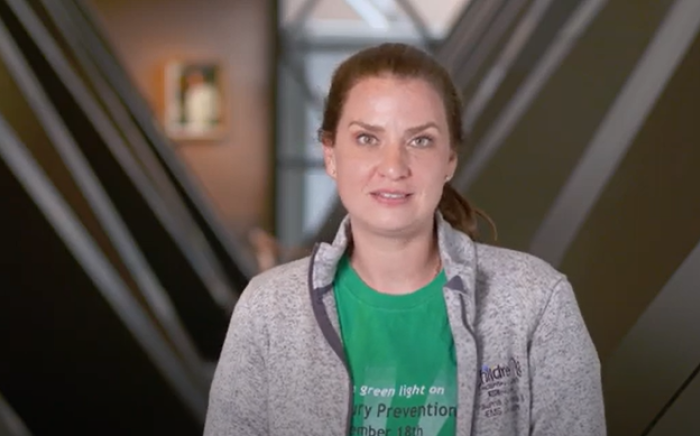Cerebral Palsy
Cerebral palsy affects movement and posture and is caused by brain damage before, during, or after birth. The brain damage underlying cerebral palsy cannot be reversed and produces lifelong disabilities. Despite remarkable medical advances, the incidence of cerebral palsy has not decreased, with one out of 500 children being afflicted with the disorder.
Treatment of cerebral palsy varies with the age of the patient and many options are available. It is important for parents and patients to consult with their treatment team, which may include a physical therapist, pediatrician, rehabilitation specialist, neurologist, neurosurgeon and orthopedic surgeon.
To meet with the cerebral palsy treatment team at St. Louis Children's Hospital, call us at 314.454.5437 or 800.678.5437 or email us.
Cerebral Palsy Spasticity Causes
 Spasticity refers to increased tone, or tension, in a muscle. Normally, muscles must have enough tone to maintain posture or movement against the force of gravity while at the same time providing flexibility and speed of movement.
Spasticity refers to increased tone, or tension, in a muscle. Normally, muscles must have enough tone to maintain posture or movement against the force of gravity while at the same time providing flexibility and speed of movement.
The command to tense, or increase muscle tone, goes to the spinal cord via nerves from the muscle itself. Since these nerves tell the spinal cord just how much tone the muscle has, they are called sensory nerve fibers. The command to be flexible, or reduce muscle tone, comes to the spinal cord from nerves in the brain. These two commands must be well coordinated in the spinal cord for muscles to work smoothly and easily while maintaining strength.
In a person with cerebral palsy, damage to the brain has occurred. For reasons that are still unclear, the damage tends to be in the area of the brain that controls muscle tone and movement of the arms and legs. The brain of the individual with cerebral palsy is therefore unable to influence the amount of flexibility a muscle should have. The command from the muscle itself dominates the spinal cord and, as a result, the muscle is too tense, or spastic.
Prevalence of Spasticity
Approximately 80 out of 100 patients with cerebral palsy have varying degrees of spasticity. Spasticity can be associated with diplegic cerebral palsy, quadriplegic cerebral palsy, or hemiplegic cerebral palsy.
Spasticity can be evident during the first year of life in relatively severe cases of cerebral palsy, but most often it is detected later. It is important to note that once spasticity has developed with cerebral palsy, it never resolves.
Effects of Spasticity
There is no way in which spasticity is of benefit to children or adults with cerebral palsy. Spasticity adversely affects muscles and joints of the extremities, causing abnormal movements, and is especially harmful in growing children. The known adverse effects of spasticity include:
- Inhibition of movement
- Inhibition of longitudinal muscle growth
- Inhibition of protein synthesis in muscle cells
- Limited stretching of muscles in daily activities
- Development of muscle and joint deformities
Patients with cerebral palsy do not have deformities of the extremities at birth but develop them over time. Spasticity of muscles, along with the limitations on stretching and use of muscles in daily activities, is a major cause of deformities of the extremities.
Treatments for Cerebral Palsy Spasticity
Oral medication, Botox injections, baclofen infusion, orthopedic surgery, selective dorsal rhizotomy surgery, physical therapy, and braces are the most common treatments of cerebral palsy spasticity and related problems.
Oral medications, such as valium and baclofen, are still tried, but the consensus is that they do not reduce spasticity.
Injections of Botox into muscles have been used widely in recent years. Botox weakens muscles for up to 3 - 4 months after injection, reducing spasticity in a limited group of muscles. Most important, the effect is only temporary. Side effects appear to be minimal.
Baclofen infusion, using a pump implanted in the abdominal wall, is clearly effective in reducing spasticity in spinal cord injury and can also reduce cerebral palsy spasticity. However, baclofen infusion is not effective permanently; when it is stopped, spasticity recurs. Also, the baclofen infusion carries risks of overdose, meningitis, and other complications that may require repeated hospitalization, and since it has been used for cerebral palsy for only several years, long-term consequences are not known.
Orthopedic operations, including muscle release and tendon-lengthening procedures, are also used to treat deformities associated with spastic cerebral palsy. Orthopedic surgery improves range of motion of the joints and makes it easier for children to move the lower extremities. A major side effect is permanent muscle weakness and resulting abnormal postures and deformities. Also, orthopedic surgery does not reduce spasticity directly but treats only the consequences of spasticity in cerebral palsy.
For more information on the treatment of spastic cerebral palsy, please call us at 314.454.5437 or 800.678.5437 or email us.












